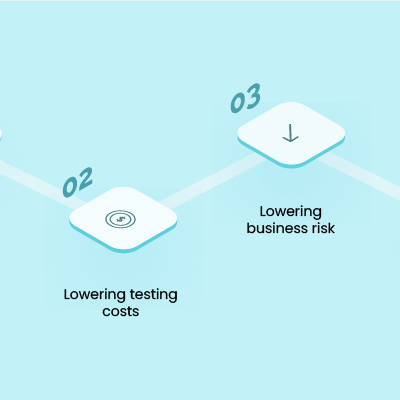Artificial Intelligence (AI) is a fascinating and complex technology that is becoming increasingly prevalent in our daily lives. From Siri and Alexa to self-driving cars and robots, AI is all around us. However, explaining this concept to a child can be challenging. In this article, we’ll explore some fun and creative ways to help children understand and appreciate the power of AI in our modern world.
What is AI?
AI is essentially a form of computer intelligence that mimics human behavior and thought processes. It involves teaching machines to think and learn like humans. AI can be found in toys, games, robots, and even in the technology we use every day, like smartphones and cars. AI algorithms analyze large amounts of data to identify patterns and make decisions based on that data.
Examples of AI in everyday life
Children are often familiar with AI without even realizing it. For example, many children have interacted with Siri or Alexa, the voice-activated assistants found in many homes. These devices use AI to understand and respond to voice commands. Kids may also have played with toys or games that use AI, such as Cozmo, a robot that can recognize faces and play games.
Self-driving cars are another example of AI that children may find interesting. These cars use sensors, cameras, and algorithms to navigate roads and avoid obstacles. They can even make decisions based on their surroundings, such as slowing down or changing lanes to avoid an accident.
How does AI work?
AI works by using algorithms to analyze data and make decisions based on that data. These algorithms are like sets of instructions that tell a machine what to do with the data it receives. For example, an AI algorithm might be programmed to recognize faces in a photo. The algorithm would analyze the pixels in the photo and look for patterns that match the features of a face, such as two eyes, a nose, and a mouth.
Once the algorithm has analyzed the data, it can make decisions based on that data. For example, an AI algorithm might be used to identify fraudulent credit card transactions. The algorithm would analyze patterns in the transaction data, such as unusual purchase amounts or locations, and flag any transactions that meet certain criteria as potentially fraudulent.
The difference between AI and human intelligence
While AI can mimic human behavior and thought processes to a certain extent, there are some key differences between AI and human intelligence. For example, AI is very good at performing specific tasks, such as recognizing faces or playing chess. However, it lacks the creativity and adaptability of human intelligence.
Human intelligence is also able to learn and adapt much more quickly than AI. While AI algorithms can be trained to recognize patterns, they require large amounts of data to do so. Humans, on the other hand, can learn from just a few examples and apply that knowledge to new situations.
Importance of AI in the future
AI is becoming increasingly important in our modern world. It is being used to solve complex problems in fields such as healthcare, finance, and transportation. For example, AI algorithms can be used to analyze medical images and identify signs of disease, helping doctors make more accurate diagnoses.
AI is also being used to improve transportation systems by reducing traffic congestion and improving safety. Self-driving cars, for example, could reduce the number of accidents caused by human error and make transportation more efficient.
Ethics and concerns surrounding AI
While AI has many benefits, there are also concerns about its use. For example, there are concerns about job displacement as more tasks become automated. There are also concerns about privacy and security, as AI algorithms are able to analyze large amounts of data about individuals.
There are also concerns about bias in AI algorithms. AI algorithms are only as unbiased as the data they are trained on. If the data used to train an AI algorithm contains biases, those biases will be reflected in the algorithm’s decisions.
How to explain AI to a child
Explaining AI to a child can be challenging, but there are some simple ways to help them understand this complex technology. One approach is to use relatable examples. For example, you could explain that AI is like a robot brain that helps machines make decisions.
Another approach is to use analogies. You could explain that AI is like a student who is studying really hard to learn new things. Just like a student needs to practice and study to learn, AI algorithms need to be trained on lots of data to learn how to make decisions.
Activities and games to teach children about AI
There are also many fun and engaging activities and games that can help children understand and appreciate the power of AI. For example, you could play a game of “guess the object” with your child. You could show them a picture of an object and ask them to guess what it is. Then, you could explain that an AI algorithm could do the same thing, but much faster and with more accuracy.
Another fun activity is to build a simple robot with your child. You could use a kit or build one from scratch using household items. Then, you could explain how an AI algorithm could be used to teach the robot to do specific tasks, such as following a line on the ground.
Conclusion
AI is a fascinating and complex technology that is becoming increasingly prevalent in our daily lives. While explaining this concept to a child can be challenging, there are many fun and creative ways to help them understand and appreciate the power of AI. By using relatable examples, analogies, and engaging activities, we can help children develop a deeper understanding of this important technology.




